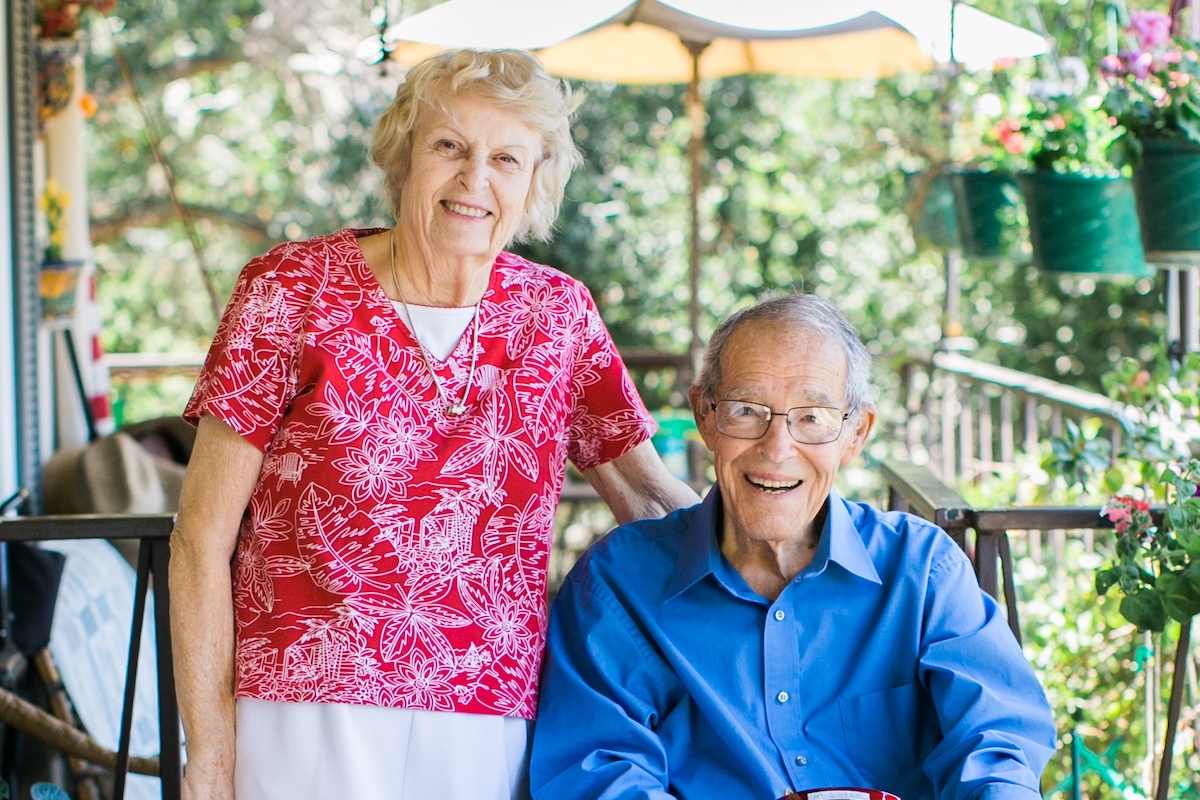Hospice Care Can Begin
Months, Not Just Days,
Before the End
VNA Health Encourages Santa Barbara Residents
to Explore Their Options
By Tyler Hayden | August 24, 2023

Find the rest of our 2023 Active Aging Guide here.
It’s a common misconception that hospice care is meant only for those with days left in their lives. President Jimmy Carter — who announced in February he was entering hospice, where he remains months later, eating ice cream and keeping up with the Carter Center — is shifting the conversation around end-of-life options at a national level.
Here in Santa Barbara with stories like Ray West’s, VNA Health is driving home the point that Medicare and other insurance providers may begin covering hospice services as many as six months out from a terminal diagnosis, and that it does no good to wait.
“This is one of our prime missions in the community — to help people understand what end-of-life care can be,” said VNA President and CEO Kieran Shah, whose own experience with a dying family member steered him toward his career.
“How do you want to spend your final days?” Shah asked. “In a sterile environment at a hospital attached to machines, or at home with your loved ones? That’s what we’re talking about.” VNA’s average hospice patient is enrolled in their program for only 18 days, he said. The century-old nonprofit he runs can offer much more.
West, a World War II veteran who won an Academy Award for sound editing Star Wars, was living in the Samarkand retirement community when he and Jean, his wife of 65 years, received the news he had an illness he wouldn’t come back from.
After several trips to the hospital, the couple decided to sign Ray up for hospice through VNA Health, Santa Barbara’s main provider of such medical services at people’s homes, in their assisted-living communities, or through Serenity House, their in-patient option.
“We needed more help,” Jean said at the time. “Our friends thought we were crazy for putting Ray on hospice when we did, but they didn’t understand what is available.”
Ray received weekly visits from his VNA nurse and social worker, and a home health aide stopped by every other day to assist with showers and reflexology on his feet. He was a lifelong photographer, capturing hummingbirds and geraniums on his final rolls. A VNA volunteer and fellow veteran lent Ray a hand in mounting and framing some of his favorite shots, which hung in Samarkand’s Life Center as a solo art show.
Before he died, Ray got his dream trip to Yosemite National Park, camera in tow. “I don’t know why anyone wouldn’t embrace this program as soon as they need help,” said Jean, who bought Ray his first camera, a Rolleicord, as a wedding present. “Don’t wait too long to start.” VNA also offers pet therapy, spiritual support, and grief counseling, before and after a death.
Just as much as it provides to Santa Barbara, VNA depends on community support, said Shah. The organization spends $2.7 million a year on local programs for which it receives no reimbursement from either the government or private insurers. Those services include Serenity House, the Loan Closet — which lends out walkers, canes, and other mobility equipment — and charity work.
“We’ll care for any patient and any family, regardless of their ability to pay,” said Shah. “But it’s very, very challenging to commit to the level of care we do with the reimbursement we get.”
To learn more about VNA Health and their 115 years of hospice services in Santa Barbara, visit vna.health.




You must be logged in to post a comment.